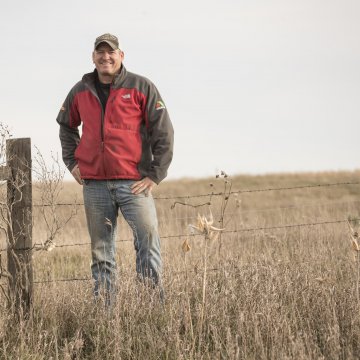Explore our blog featuring articles about farming and irrigation tips and tricks!
Finding Balance For The Land

By: Mitch Kezar
Chad Schooley keeps an eye on the past, but his rough farmer’s hands work in the present. His boots tread ground plowed by his father, grandfather, and great-grandfather. With a mind on the future, he walks the acres of his Cabin Still Cattle Company in the rolling hills of Hamlin County, South Dakota, and looks for balance.
Sitting on the end gate of his pickup truck, young son Beau beside him, Schooley says, “I’m not a firm believer that we need to turn everything back into pasture, but we need an equal balance. If our farming practices continued like they were when our great-grandfathers were farming – where we plowed all the land every year, were losing topsoil, and had no trees – we’d be in a worse situation. We have turned the corner. We’re building the soil back up, and we’ve got our soil headed back to where it once was.”
The Schooley farm grows grass for cattle, oats for feed, corn, soybeans, and wheat. Cover crops are grown after small grains are harvested for winter grazing for cattle.
Schooley started converting tillable ground to warm-season grasses more than 15 years ago. Two years ago, he added cool-season perennial grasses as pasture for spring calving.
Stay up to date on all T-L news and get alerts on special pricing!


